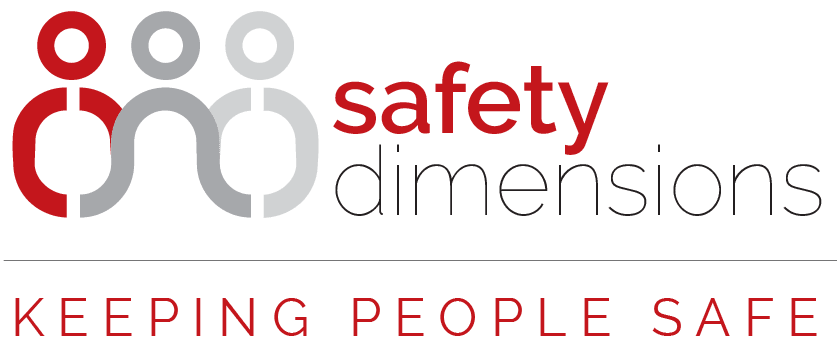[Part 2 of 2] Be Your Own Bodyguard – Personal & Staff Safety At Home and In Foreign Countries
In the first part of this article, I focused on the range of personal safety issues that PCBU’s need to be cognisant of when managing the WHS of their staff domestically and abroad. Although some PCBU’s may regard such issues as being resolved once engaging a security advisor, it should be remembered that our obligations cannot be delegated quite that easily. A PCBU needs to be mindful of, and actively manage the likelihood of a security/safety incident occurring as well as the degree of harm that might result from the same.
Indeed, under WHS legislation, a PCBU ought to have a reasonable degree of knowledge about the scope of potential security/safety risks to which their staff may be exposed, as well as the manner by which such exposures could either be eliminated or minimised. However, if PCBU’s (or individuals) are not familiar with the nature of the risk exposures themselves, how can they make decisions regarding mitigation strategies? How can they satisfy their due diligence requirements?
Once again, it is a matter of planning, planning, and more planning. Whilst this is where a suitably qualified security advisor and/or protective services team are definitely key elements of the solution, what can the PCBU do themselves to address potential security risk issues? What frameworks can they use that are familiar to them, and that align with their broader WHS management system?
Let’s look to the hierarchy of controls as providing a suitable framework by which we can discuss potential types of mitigation measures for the security/safety challenges at hand.
Elimination
¢ Decline to undertake work/sections of work
¢ Eliminate the need to work in high risk areas
¢ Remove personal details from social media
Substitution
¢ Change work sites and function locations to more secure options
¢ Regularly change travel routes and personal/work routines
¢ Change work systems to minimise security exposures
Engineering
¢ CPTED (Crime Prevention Through Environmental Design) based infrastructure
¢ Dedicated and specialised mail sorting rooms
¢ Unmarked and /or protected (armoured) vehicles where appropriate
Isolation
¢ Compartmentalisation of work/secure areas
¢ Access control systems (ie. physical, ICT: Information and Communication Technology)
¢ Layered security design
Admin
¢ Restrict publication of personal details etc on social media, company website and in articles
¢ Staff training in situational awareness/personal safety
¢ Security risk management procedures
PPE
¢ Monitored personal duress alarms
¢ Wearing of non-company logo clothing when travelling and in areas deemed as high risk
¢ Wearing of ballistic protection when determined appropriate
Whilst not exhaustive, the above constitute examples of potential security/safety risk mitigation strategies that PCBU’s can employ to assist them meet their due diligence requirements. In doing so, the key to managing such risk exposures is exactly the same that one would adopt to address those WHS issues regarded as typical or business as usual – that is, the establishment, implementation and maintenance of a robust risk management system. In this sense, effective security management should be exactly the same as effective safety management, in that the management of both should be seamless, integrated with other management systems, and should subsequently be regarded as business as usual. The same logic applies at both an organisational and individual level.
Industry business models are constantly adapting to reflect the ever changing face of contemporary commercial opportunities, and with these changes, we are also seeing significant differences in the risk profiles of commercial operations. Although different strategies have to be developed and employed to manage these threats/hazards, our core WHS mindset or approach need not change – we only need to expand our focus and integrate other disciplines into the models/frameworks we currently use. It is a matter of comprehensive planning, consultation, and risk management.
Having worked in operational and advisory roles in both the safety and security fields for over twenty years, this has been the approach that I have found to be the most successful in facilitating management system integration – thereby ensuring both the safety and security of organisations and their staff. Indeed, by employing a common framework, familiarity and organisational strengths can be built on, and energies can be focused on managing the issues at hand, rather than managing the system itself. Remember the KISS (Keep It Simple and Smart) principle, and be mindful of the fact that management systems do not have to be complex to be effective, just detailed.
I will not deny that workforce security management is a potentially complex issue. That is not the intention of this article, and nothing could be more further from the truth.
However, managing staff security issues within the realm of WHS is not (and should not be) impossible – it is a matter of thorough planning and preparation, and of being mindful of those wider risk issues a PCBU and its commercial operations are in reality exposing their staff to. I believe the two issues naturally go hand in hand.
Security managers have been actively managing the safety of workforce members for years (under the guise of security), whereas safety managers, service providers and certification bodies have been slow to acknowledge the role of security management in their roles, and the synergies that undeniably exist between workforce security and workforce safety management.
So, if I may conclude this article by putting to you the following¦.. are the differences in potential threats to the personal safety of our workers in domestic and international settings less distinct than we once imagined? What capabilities do we then need to develop amongst professionals in the wider WHS community to enable them to confidently manage WHS security issues? Although these questions need to be approached in a well-considered manner, as there are many contextual, legal and operational issues associated with them, I believe that such awareness and capacity development are critical for the WHS industry as the nature of WHS roles and risk management challenges both change. After all, how can a workplace be safe if it is not indeed secure?
 About the Author:
About the Author:
Dr Paul Johnston holds a PhD in Public Safety Risk Management, a Graduate Certificate in Occupational Hygiene Engineering and a Bachelor of Behavioural Science (WHS & Organisational Change Facilitation). Paul also has professional certifications in risk management and anti-terrorism.
With over 20 years of Health, Safety, Environment & Security Risk Management experience in both the public and private sectors, Paul continues to provide operational, management system consulting, research & analysis, and training services to a wide range of industry groups throughout Australia and internationally.
